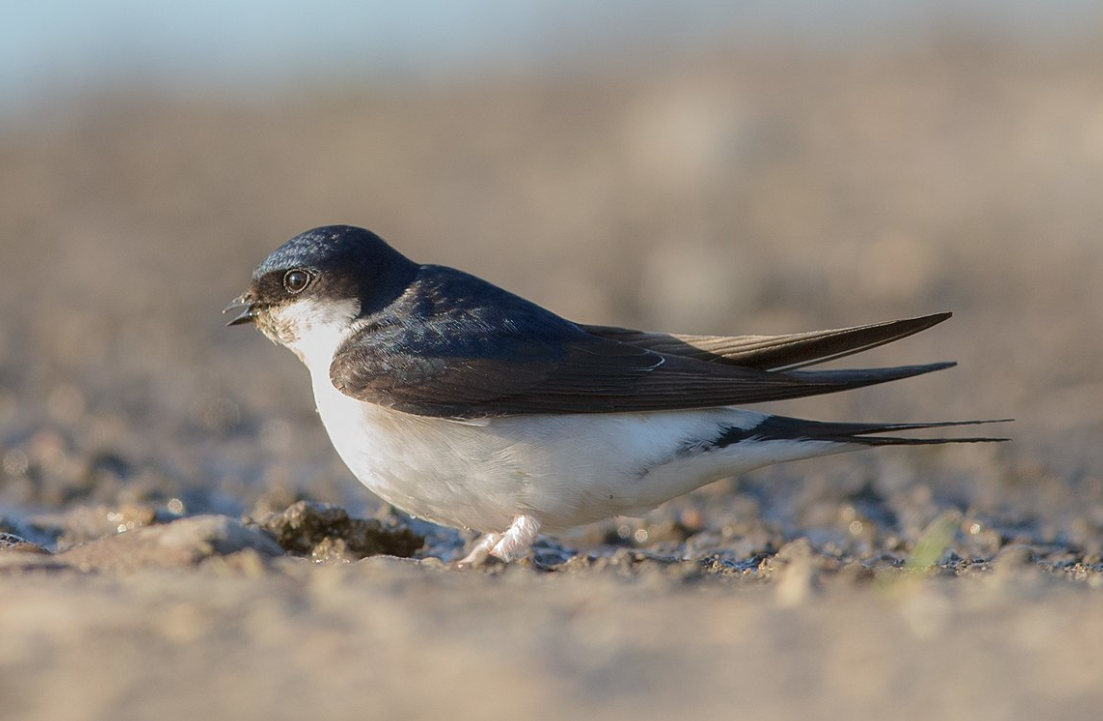The House Martin, scientifically known as Delichon urbicum, is a small passerine bird renowned for its agile flight, distinctive appearance, and close association with human habitats. These birds are a delight for bird watchers and nature enthusiasts, offering fascinating glimpses into their behavior, migration patterns, and nesting habits.
Appearance and Identification
House Martins are easily recognizable by their glossy blue-black upperparts and contrasting white underparts. They have a forked tail and a short, slightly notched beak. Their wings are long and pointed, which aid in their impressive aerial maneuvers. These small birds, measuring about 12-13 cm in length with a wingspan of 26-29 cm, are often seen darting gracefully through the sky as they hunt for insects.
Habitat and Distribution
House Martins are widely distributed across Europe, Asia, and North Africa. They are migratory birds, spending their breeding season in Europe and parts of Asia, and migrating to sub-Saharan Africa for the winter. Their preference for open countryside, towns, and villages with accessible water sources makes them a common sight in both rural and urban areas.
Nesting and Breeding
One of the most fascinating aspects of House Martin behavior is their nesting. These birds build their nests out of mud, creating small, enclosed structures often attached to the eaves of buildings. The nests are meticulously constructed with hundreds of mud pellets, typically gathered from nearby water sources. Inside, the nests are lined with feathers and soft plant materials to provide comfort for the young.
House Martins are social birds and often nest in colonies, which can consist of dozens of pairs. The breeding season typically begins in late spring, and a pair may raise two or even three broods in a season. Each clutch usually contains four to five eggs, which hatch after about two weeks of incubation. The chicks fledge approximately 22-32 days after hatching, although they often remain dependent on their parents for food for a short period after leaving the nest.
Feeding Habits
House Martins are insectivores, catching their prey in flight. Their diet consists mainly of flies, aphids, and other small insects, which they capture with their wide, gaping mouths. This feeding behavior makes them beneficial to humans, as they help control insect populations. Their agile flight patterns and speed make them effective hunters, often seen swooping and diving over fields, rivers, and urban areas.
Migration
Migration is a critical aspect of the House Martin’s life cycle. As summer wanes, these birds prepare for their long journey to Africa, traveling thousands of kilometers to reach their wintering grounds. The journey is arduous, but House Martins are well-adapted for the long-distance flight, relying on favorable winds and abundant food sources along their route.
Their return in the spring is eagerly anticipated by bird watchers and nature lovers, marking the end of winter and the beginning of the breeding season. The sight of House Martins flitting around their nests is a welcome sign of the warmer months ahead.
Conservation and Challenges
While House Martins are currently not considered endangered, they face several challenges that could impact their populations. Habitat loss, due to urbanization and changes in agricultural practices, is a significant threat. Additionally, climate change can affect their migration patterns and the availability of food sources.
Conservation efforts focus on preserving and enhancing suitable habitats for House Martins. This includes maintaining traditional building structures that provide nesting sites and ensuring the availability of mud for nest construction. Public awareness campaigns and citizen science projects, such as monitoring nest sites and reporting sightings, also play a crucial role in conservation.
Conclusion
The House Martin is a remarkable bird that brings joy to those who observe its acrobatic flights and intricate nesting behavior. Its presence is a reminder of the delicate balance between wildlife and human habitats. By understanding and protecting these charming birds, we can ensure that future generations will continue to enjoy the beauty and ecological benefits they bring to our world.

